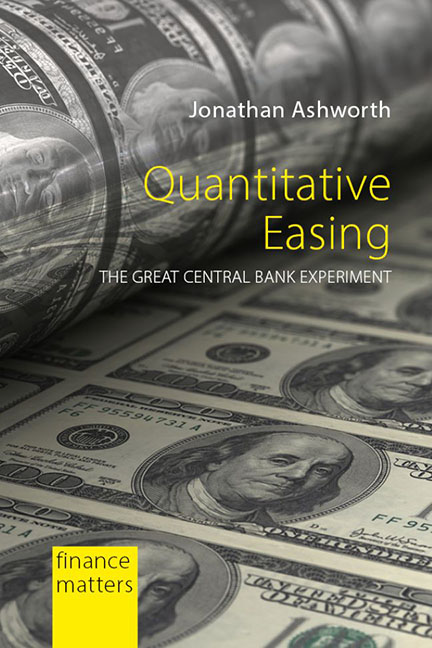Book contents
- Frontmatter
- Contents
- Preface and acknowledgements
- Abbreviations
- Foreword
- 1 Monetary policy-making since the end of Bretton Woods
- 2 Key monetary policy trends and events in the decades before the Great Financial Crisis
- 3 The Great Financial Crisis and the onset of quantitative easing
- 4 How quantitative easing works
- 5 Measuring the effectiveness and impact of quantitative easing
- 6 International spillovers of quantitative easing
- 7 Criticisms and negative externalities of quantitative easing
- 8 Exiting quantitative easing and policies for the next slowdown
- Conclusion
- Notes
- References
- Index
- Frontmatter
- Contents
- Preface and acknowledgements
- Abbreviations
- Foreword
- 1 Monetary policy-making since the end of Bretton Woods
- 2 Key monetary policy trends and events in the decades before the Great Financial Crisis
- 3 The Great Financial Crisis and the onset of quantitative easing
- 4 How quantitative easing works
- 5 Measuring the effectiveness and impact of quantitative easing
- 6 International spillovers of quantitative easing
- 7 Criticisms and negative externalities of quantitative easing
- 8 Exiting quantitative easing and policies for the next slowdown
- Conclusion
- Notes
- References
- Index
Summary
Despite massive expansions in central banks’ traditional roles as lenders of last resort during the GFC and a reduction in official interest rates to their zero or effective lower bounds, the western economies stood on the precipice of another Great Depression. Against such a backdrop, the Fed and BoE embarked on massive QE programmes, which together with large fiscal stimulus packages, helped quell the crisis and enable their economies to avoid worst-case scenarios and stage economic recoveries. These initial rounds of QE had significant positive impacts on financial markets and economic activity by further lowering various longer-term interest rates, reducing elevated tail risks, improving liquidity in dysfunctional financial markets and boosting the confidence of investors and the general public.
Future major rounds of QE occurred in the US, UK, Japan and the euro area at different times over subsequent years, although given that various financial crises had passed, it was primarily enacted to boost sluggish growth, reduce the risks of deflation and help to raise inflation to central bank targets. A key feature of the policy environment when these programmes were enacted was that, with the exception of Japan, central banks had become the “only game in town” in supporting their economies through QE and other unconventional tools. Indeed, amid soaring government debt levels and varying degrees of pressure from politics and/or financial markets, crisis era fiscal stimulus programmes made way for significant fiscal tightening which created material economic headwinds. These subsequent QE programmes did have positive impacts on financial markets and growth, although there seemed to be signs of diminishing returns compared with the programmes enacted during the crisis and the negative side effects are likely to have increased over time, particularly for those countries where much of the yield curve has moved into negative territory. An overarching theme has been that these rounds of QE were unable to generate robust recoveries and raise inflation up to central bank targets, suggesting that it is not quite as powerful a tool as many may have thought before the GFC. Some economists argue that it should have been done in greater amounts, although political economy constraints already appear to have been high in the US and the euro area and few could credibly accuse the BoJ of being overly timid.
- Type
- Chapter
- Information
- Quantitative EasingThe Great Central Bank Experiment, pp. 147 - 149Publisher: Agenda PublishingPrint publication year: 2020



